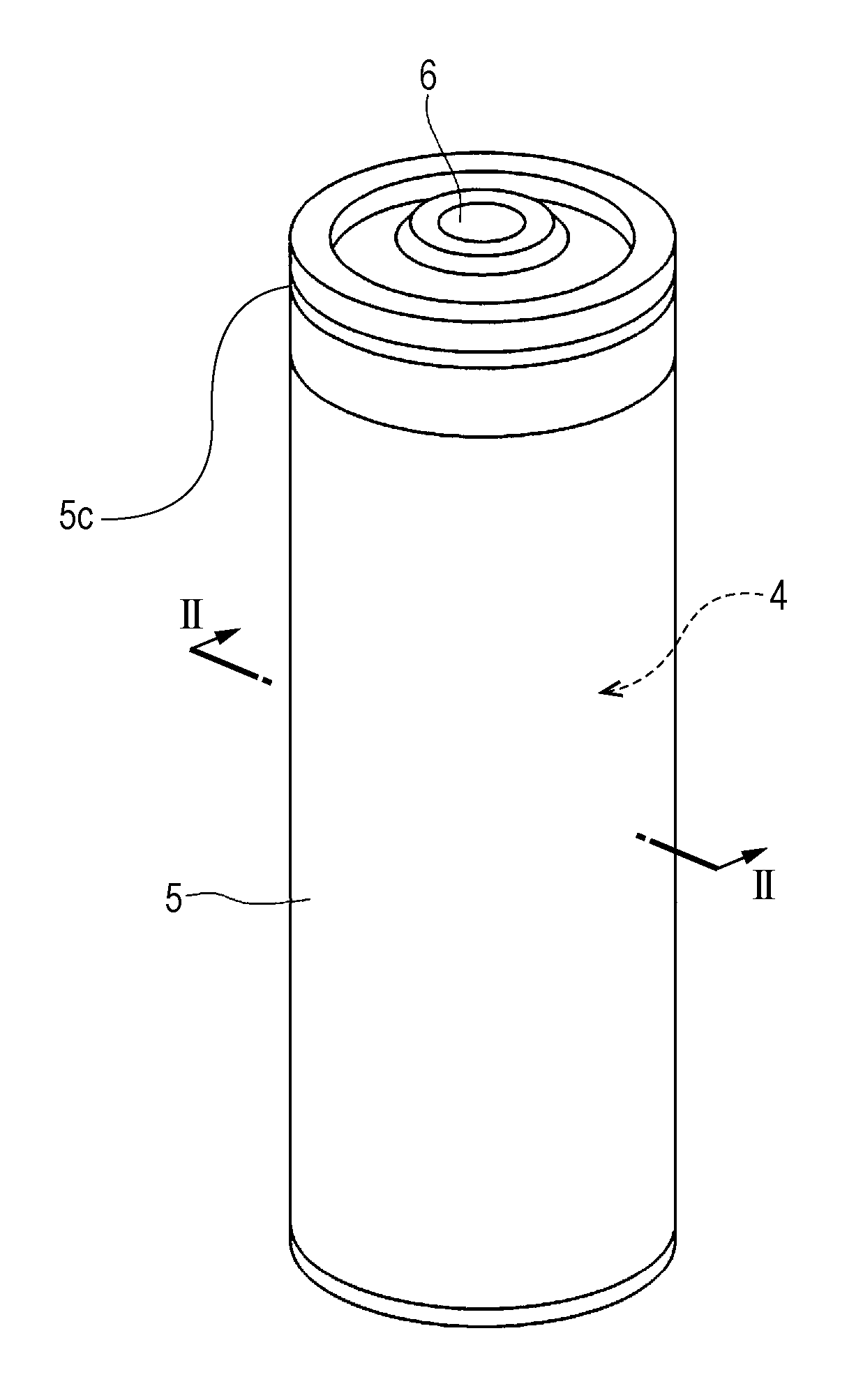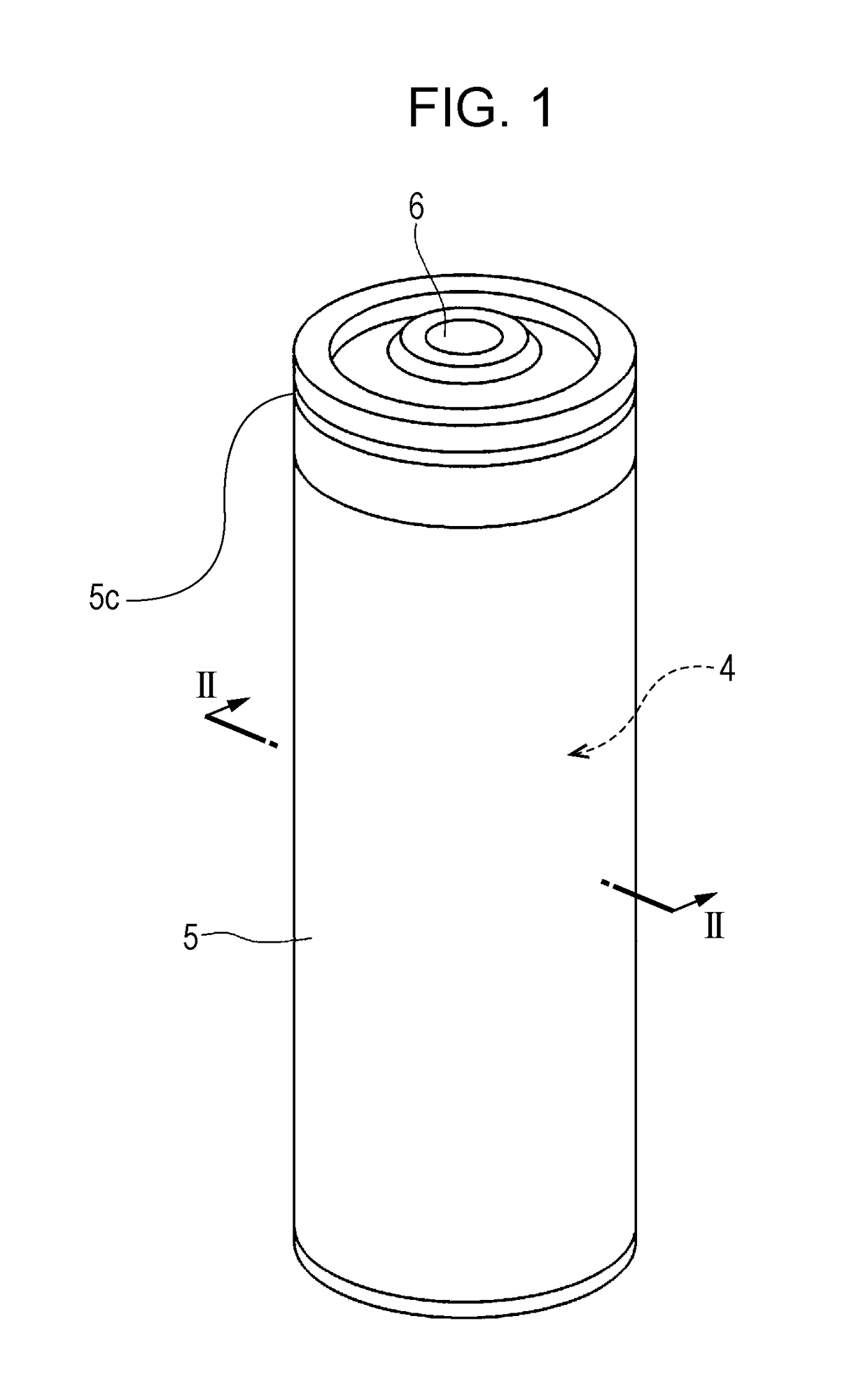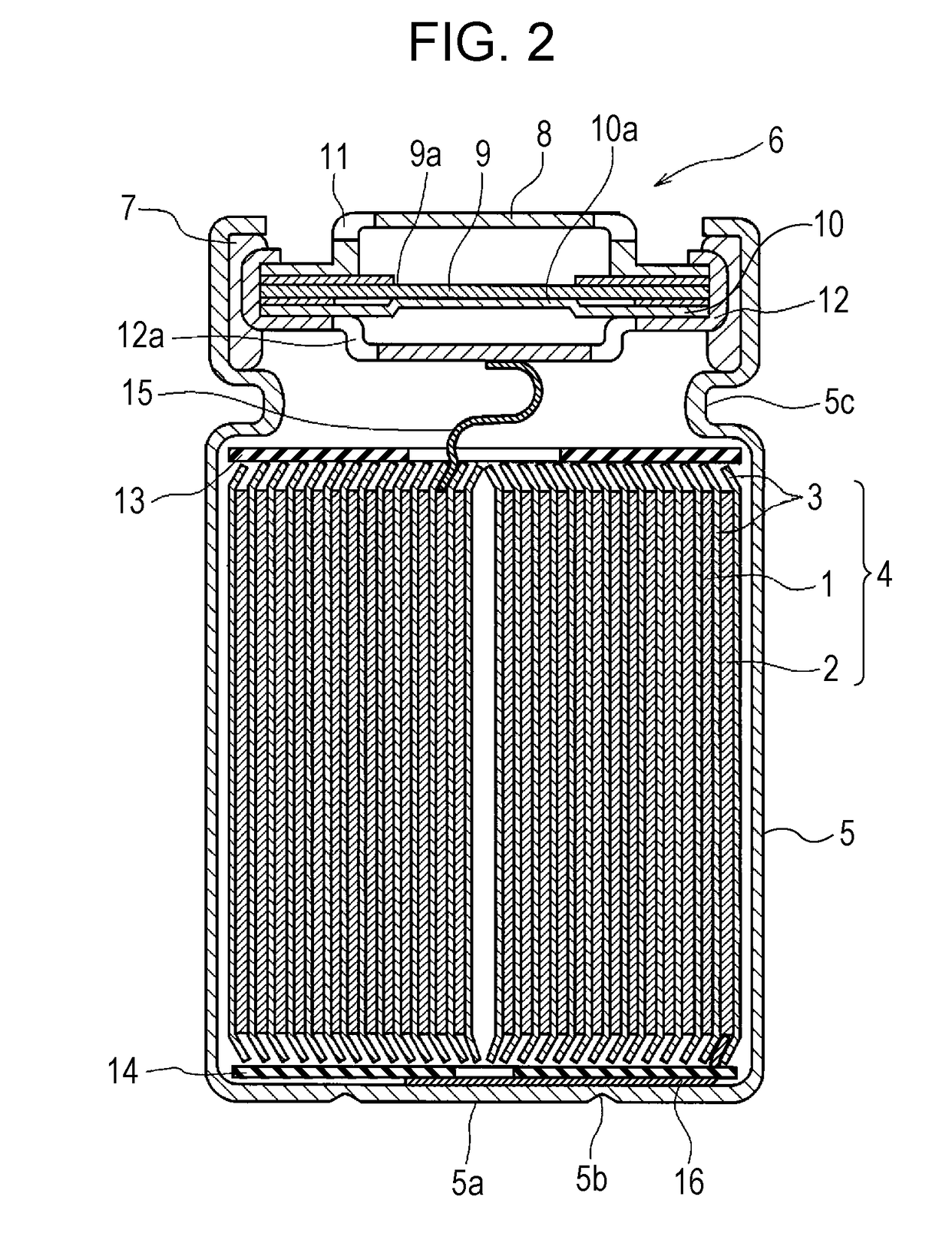Non-aqueous electrolyte secondary cell
a secondary cell, non-aqueous electrolyte technology, applied in secondary cell servicing/maintenance, cell components, batteries, etc., can solve the problems of decreased initial charge/discharge efficiency of the cell, and achieve the effect of high nickel (ni) content rate and improved high-temperature storage characteristics
- Summary
- Abstract
- Description
- Claims
- Application Information
AI Technical Summary
Benefits of technology
Problems solved by technology
Method used
Image
Examples
example 1
[Formation of Positive Electrode]
[0053]As a positive electrode active material, a lithium-containing transition metal oxide represented by LiNi0.82Co0.15Al0.03O2 (NCA) was used. A positive electrode mixture slurry was prepared in such a way that after the above active material, acetylene black, and a poly(vinylidene fluoride) were mixed together so as to have a mass ratio of 100:1:0.9, an appropriate amount of N-methyl-2-pyrrolidone (NMP) was added thereto. Subsequently, this positive electrode mixture slurry was applied to two surfaces of a positive electrode collector formed of aluminum foil. After the coating films thus obtained were dried, rolling was performed using a rolling roller, so that a positive electrode in which positive electrode active material layers were formed on the two surfaces of the positive electrode collector was formed. The packing density of the positive electrode was 3.7 g / cm3.
[Formation of Negative Electrode]
example 2
[0062]Except that a non-aqueous electrolyte was prepared by dissolving LiFSA and LiPF6 in the non-aqueous solvent at concentrations of 0.5 M and 0.7 M, respectively, a cell was formed in a manner similar to that of Example 1, and the above evaluations were performed.
example 3
[0063]Except that a non-aqueous electrolyte was prepared by dissolving LiFSA and LiPF6 in the non-aqueous solvent at concentrations of 0.2 M and 1.0 M, respectively, a cell was formed in a manner similar to that of Example 1, and the above evaluations were performed.
PUM
| Property | Measurement | Unit |
|---|---|---|
| thickness | aaaaa | aaaaa |
| total volume | aaaaa | aaaaa |
| temperature | aaaaa | aaaaa |
Abstract
Description
Claims
Application Information
 Login to View More
Login to View More - R&D
- Intellectual Property
- Life Sciences
- Materials
- Tech Scout
- Unparalleled Data Quality
- Higher Quality Content
- 60% Fewer Hallucinations
Browse by: Latest US Patents, China's latest patents, Technical Efficacy Thesaurus, Application Domain, Technology Topic, Popular Technical Reports.
© 2025 PatSnap. All rights reserved.Legal|Privacy policy|Modern Slavery Act Transparency Statement|Sitemap|About US| Contact US: help@patsnap.com



